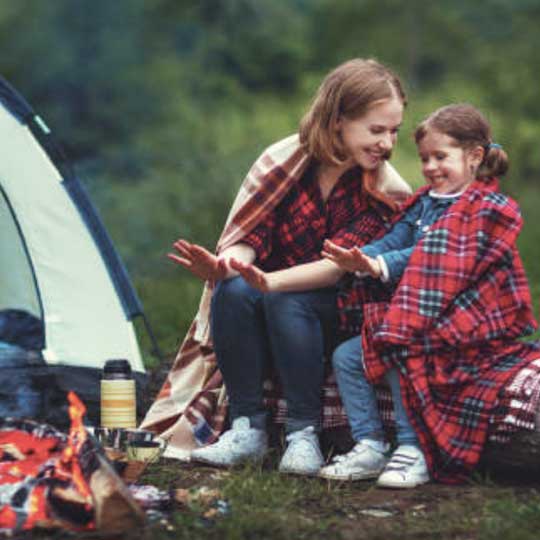6 Tips to Help You Get the Most of Your Gorilla Trek
The world’s largest apes, the Mountain gorillas are critically endangered found only in three places on planet earth. So it’s no surprise that mountain gorilla trekking safaris are increasingly popular in Rwanda, Uganda and Democratic Republic of Congo.
If you wish to visit Africa to see gorillas, we recommend planning your gorilla safari in advance time. At least book your gorilla permit in 3-5 months with an authorized tour operator.
A gorilla safari to each of the three gorilla destination has its own ups and downs. Consider the varying gorilla permit price, ground transportation, steep terrain and weather, but most importantly Rwanda and Uganda are by far the safest places in terms of security.
However, visitors with doubt to visit DRC for gorilla trekking should take a look at successful gorilla safaris or active Mt. Nyiragongo volcano hiking since 2012 on trip advisor, the word’s trusted travel advisory site.
Gorilla trekking itself is very safe, on a guided trek, armed rangers, guides and trackers escort tourists to the gorillas in their natural habitats. Gorilla tourism as the leading foreign exchange earner, maximum security and daily monitoring has no room for anything that would rather affect the gorillas and their habitats so as the experience of visitors.
Important tips to note;
Decide the best season for you to trek gorillas
Many visitors go on a gorilla safari during the dry months in December to February and June to September. Simply because, there’s less rain, hiking in the forest tends to be easier. However, you cannot avoid the crowds, longer and strenuous treks require fitness while searching for the gorillas.
That said some visitors are convinced to go gorilla trekking in the rainy / low season during April, May and October to November. Although trekking tends to be difficult due muddy and slippery trails, a gorilla safari in Uganda is cheaper with a discounted gorilla permit at $450 and $350 for DRC.
In addition, due to heavy rains, chances are high to have shorter treks. Gorillas often times feed closer to the park boundaries or at lower slopes since they tend to move less due to abundance of food.
Dress in appropriate jungle trekking gears
Trekking to see the gorillas is no doubt the battle of the fittest. Even though treks differ with regard to distance and time to reach the gorillas, the steep altitudes and thick vegetation require good foot wear. Wear sturdy hiking boots and then add on guitars and long stocking to protect your ankle born. Neat trekkers wear waterproof boots to keep your feet dry even when you’ll most likely cross muddy rivers and valleys especially in Bwindi forest and Virunga national park DRC.
Wear long pants and ensure to tuck them into the boots to prevent leeches or safari ants from crawling into. Besides the irritating leeches, the bush has stinging nettles and thorns you need to protect your skin. Never wear shot pants on a gorilla trek.
On top, wear long sleeved shirts, then add on warm sweater or jacket. Treks usually begin morning when it’s very cold but eventually as you hike to steep altitudes, you’ll feel heat or even sweat. It’s better to have a T-shirt or additional cloth. Forests have high humidity and rainfall is unpredictable any time of the day. Carry a rain jacket or poncho to protect your camera equipment and also stay dry in case it rains.
Talk to gorilla guides about your fitness capacity
Before the search for gorillas begins, visitors meet the guides early morning for briefing. It’s advisable to tell your guides as early as possible about your fitness levels so you can be allocated to gorilla families that might be easier to locate. There’s no specific time to return from the gorilla trek because gorillas move frequently. Lucky visitors can locate gorillas within 30 minutes or spend up to 8 hours in the forest. And this would be misery to the elderly or unfit visitors.
Pack enough drinking water, food or snacks
Most lodges usually pack food for their visitors on a gorilla trek. You should tell them about your eating habits or picky eaters are advised to buy their particular foods in cities despite the sustainable travel idea of buying local.
Have at minimum 3 liters of drinking water. Packed food, Snacks or biscuits and energy drinks can keep you active.
Hire a porter
Depending on the weight of your day’s pack, you should consider hiring a porter at an extra cost. You’ll hike comfortably and also be helped out during step ascents or descents. Porters are from local communities and it earns them a living.
Similarity you can show appreciation by tipping your guides, rangers or trackers. It’s not mandatory but if you have the money, these guys do a great job protecting gorillas besides they give you a safe and memorable experience.
Have a camera for gorilla photography
As part of the gorilla trekking rules and regulations, camera flashlight is prohibited when photographing gorillas. Have your camera set ready before you get close to the gorillas. You spend only one hour with gorillas and fixing your camera during that time will mean lost opportunity to observe and take photos.
This is the best collection of things to do, things to see, things to do, best places where to stay, and more. Lets explore Bwindi Forest National Park together! We bring to you the best tours and journey ideas as well as travel information to help you plan a perfect trip into the impenetrable forests of Bwindi.
Explore Bwindi
- Where is Bwindi?
- Getting There
- Things to Do
- Things to See
- Travel Updates


